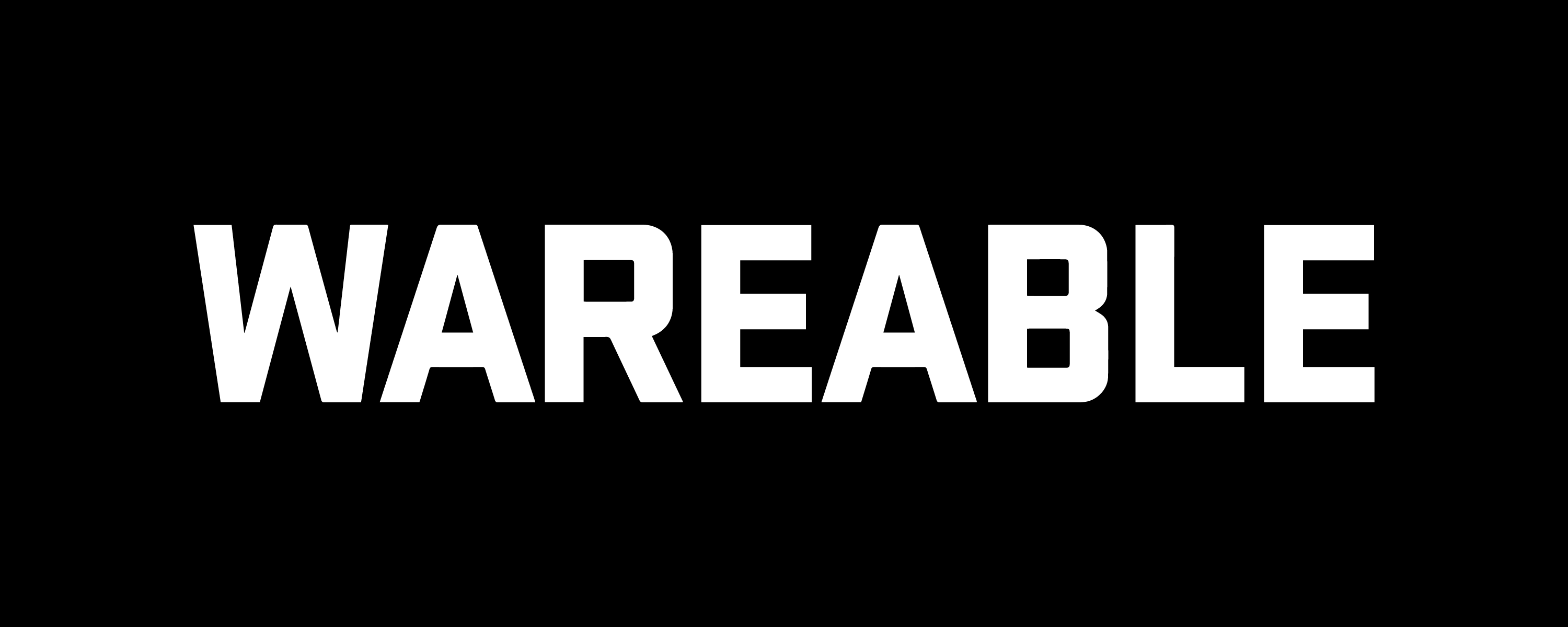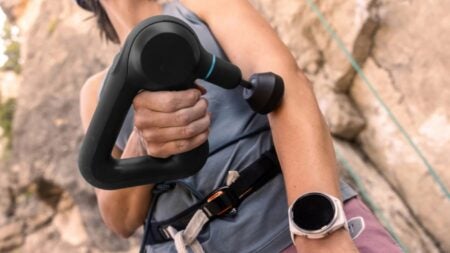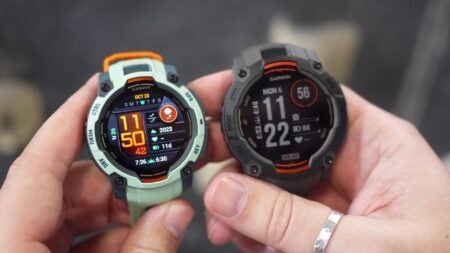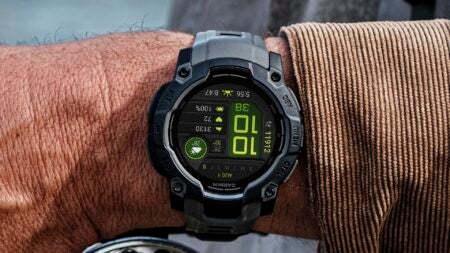Strong internal competition takes the shine off this superb mid-cycle upgrade
The Epix was already one of the best outdoor sports watches available to buy, and Garmin has brought plenty of healthy tweaks to the package for the Epix Pro. In a technical sense, it's the top option out there - and we don't think there's much real competition from other companies at present. The problem for the Epix Pro 2 is that internal competition is extremely fierce, and it makes its lofty price tag that bit harder to justify. Unless you want the smaller profile of the 42mm option or huge battery life attached to the 51mm, in which case you have no choice, the Forerunner 965 and Epix 2 are both better value picks in almost every other scenario.
We like the updated heart rate sensor and flashlight, with the new software features also showing promise, but none of these things are really worth making the leap for.
Pros
- Solid hardware additions
- Finally available in three sizes
- Great accuracy across the board
Cons
- Epix 2 and FR965 are better value
- ECG hardware not being used
- Mediocre smart features
After relaunching the Epix lineup with a bang back in 2022, Garmin has returned to the well and now added a Pro version to the series. And it’s an update that offers plenty of intrigue.
The big change here is a fairly basic one, with the sports watch now finally offered in three different case sizes – 42mm, 47mm, and 51mm – and matching the Fenix 7 and Fenix 7 Pro lineup for the first time.
But it also steals another of the Fenix’s former exclusive points, too, with each Epix Pro model featuring the flashlight that was previously only found on the Fenix 7X.
When combined with the return of the AMOLED display, an updated heart rate sensor array, and a handful of new software features, the Epix Pro appears to be the most complete and functional of Garmin’s premium watches.
But it’s also being squeezed into an ever-growing Garmin lineup that still includes the very capable Epix (Gen 2) and Garmin Forerunner 965 as cheaper options.
Does the Epix Pro instantly become the new undisputed champion of the sports watch world, then, or is this a mid-cycle upgrade that’s not worth bothering with? Let’s explore.
- Garmin Epix (Gen 2) vs. Garmin Epix Pro (Gen 2)
- Garmin Fenix 7 Pro review
- Garmin Fenix 7 vs. Garmin Fenix 7 Pro
Case sizes and design changes
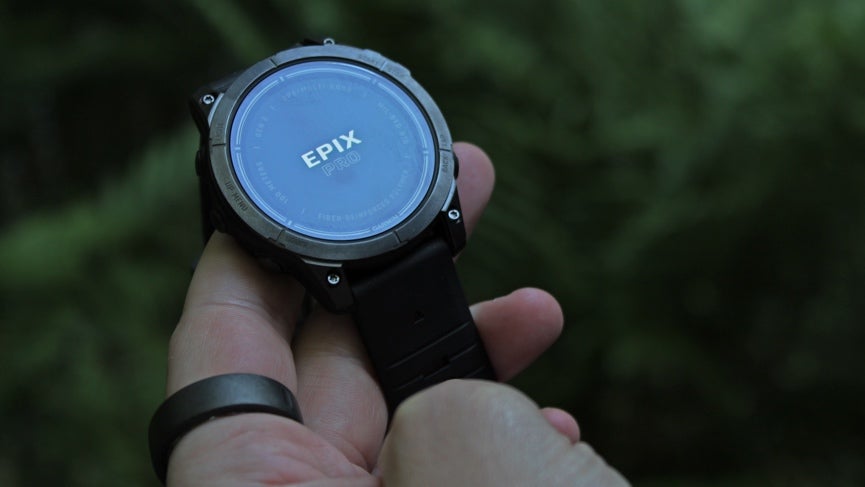
Design changes aren’t usually a major factor in mid-cycle upgrades like the Epix Pro 2, but Garmin has actually added a couple of significant ones here.
As we mentioned just above, the major difference between the Pro model and the standard edition is the case size options – and finally means the series is accessible to those with smaller wrists, or those who crave the ultimate size and staying power of the 51mm model.
Our test unit is the 47mm Pro edition, so we naturally can’t test out how the design translates to both new case sizes, but, given it’s the same architecture we’ve tested and loved with the Epix 2, Fenix 7 and 7 Pro range, we only see this move as a positive.
Just be aware that there will be battery life differences between each model, however – these aren’t all precisely the same watch.
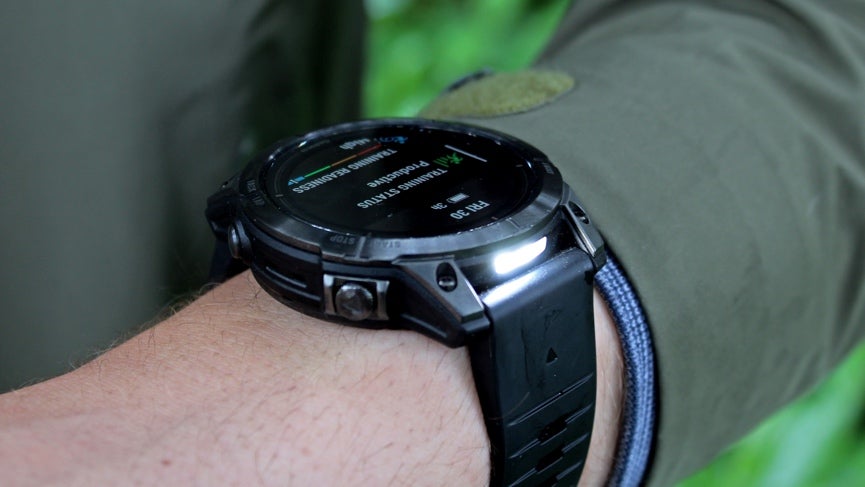
The flashlight is the other big talking point here.
Seamlessly built into the top of the Epix Pro’s case, this works exactly as it does on the Fenix 7X – and, now, all editions of the Fenix 7 Pro range.
That means a double tap of the ‘Light’ button will see it immediately kicked into action, and it can also be integrated into your workout tracking, too, with multiple strobe options available.
We haven’t had much need for this light during summer training sessions, given the minimal low light hours, but we really feel like this would come into its own during the winter runs.
And, in the meantime, we’ll be reserving it for helping us locate our phone down the side of a car seat and unlocking our front door at night.
It’s the definition of a nice-to-have feature, obviously, as opposed to one that’s essential or a reason to upgrade, but that’s also exactly what you would expect from a mid-cycle Pro edition.
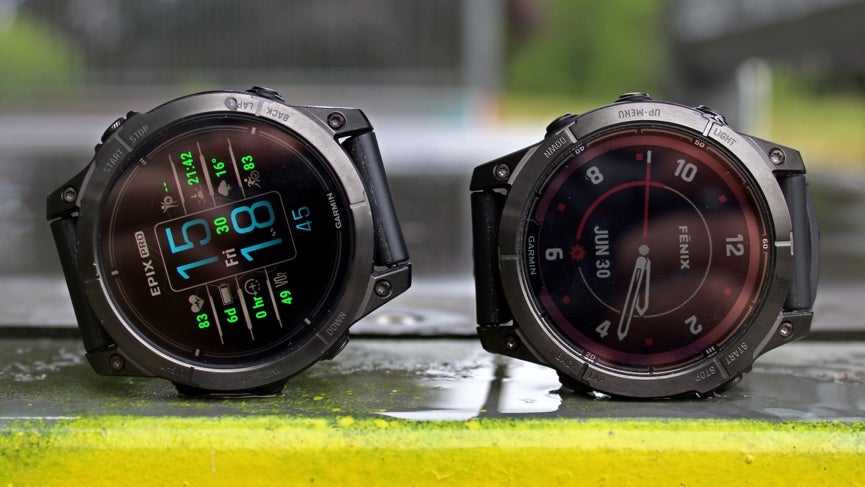
As we mentioned in our Fenix 7 Pro review, our only concern is the potential for accidental light-ups.
This didn’t really occur for us during testing, but, given how much of a battery drain it can be, and the fact it can’t be configured differently, this is the only potential hiccup on what’s otherwise a very handy addition.
All in all, though, we can’t fault what Garmin has done with the design and case changes. The big modifications to the design will naturally be saved for the Fenix 8/Epix 3, so this is about as substantial as things could really get from a mid-generation dip.
Optimized heart rate sensor testing
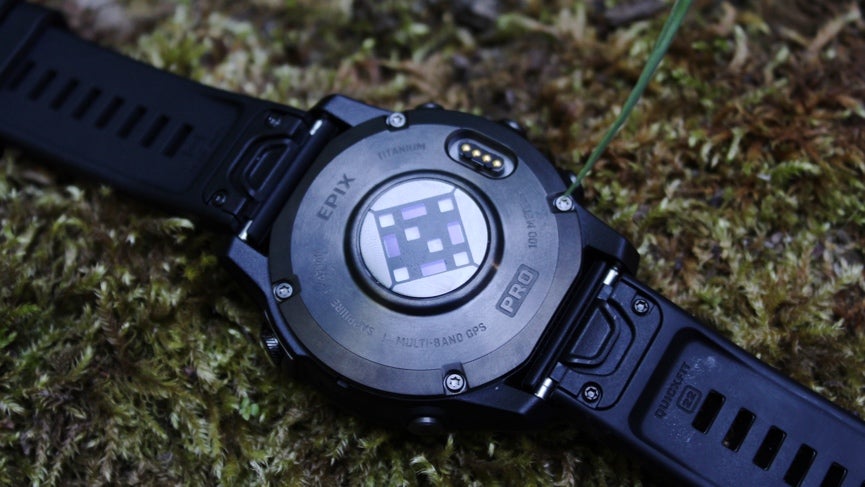
Drawing any meaningful conclusions about the new ‘optimized’ heart rate sensor of the Epix Pro and Fenix 7 Pro has taken longer than we expected, with the results generally proving extremely tight.
We found in our Fenix 7 Pro test that the same sensor was able to stick tighter to a chest strap’s overall averages, and it also responded to changes in pace a shade quicker than the Garmin Forerunner 965 on our opposing wrist.
Overall, we’d say that’s the pattern with this latest sensor. It’s by no means a huge leap forward – which is likely why this isn’t being branded openly as Elevate V5 (yet) – but it is, at least some of the time, just that bit more accurate.
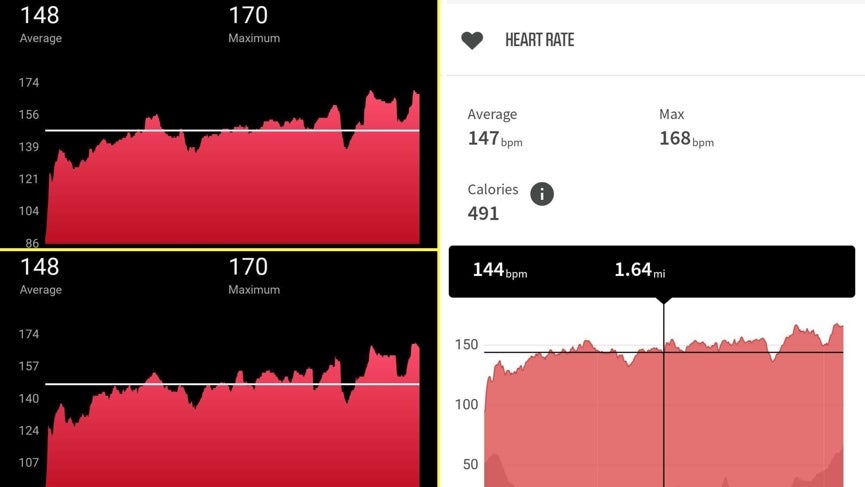
Anecdotally, we would say at least half our sessions saw the FR965 and Epix Pro finish with virtually identical average HR and maximum HR figures, and this would also be within 1-2 beats of our chest strap, as shown above.
Though there was no real separation in most instances, though, we did have a couple of interval sessions in which the Epix Pro did a better job of sticking to the chest strap’s figures.
It’s pretty evident that the FR965 struggled to register those seven different intervals as clearly as the chest strap and Epix Pro in the example below, even if the average HR isn’t terribly far off.
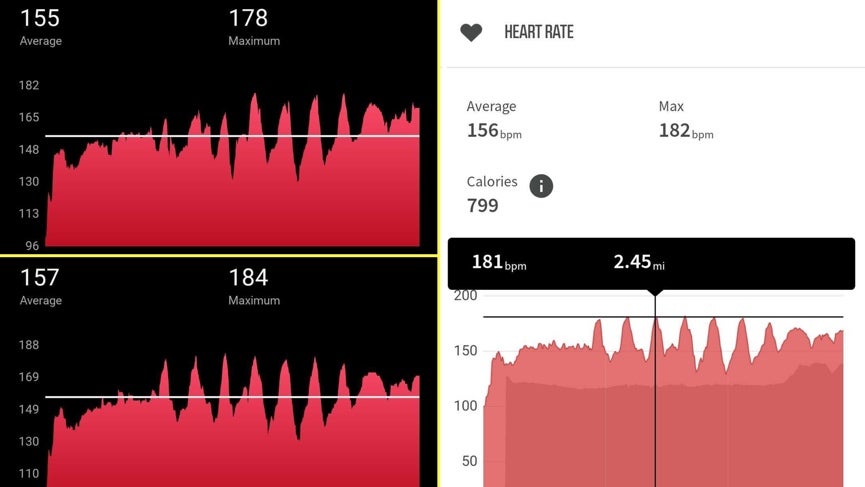
We also noticed during interval runs that the Epix Pro was just slightly quicker at spotting change at the beginning and end of each, though latency when compared to the chest strap is obviously still present.
Despite this being a bit of a win for the Epix, then, we’d also caveat it by saying the FR965 performed similarly well in most of these higher-intensity interval or tempo workouts.
So, is it better? Just about – yes. Is it noticeable enough to really make a difference or upgrade? Not really, in our view.
We’d be more than happy to strap the FR965 back on full-time for HR training, and we would obviously still recommend pairing a chest strap if you want the best accuracy.
Endurance Score
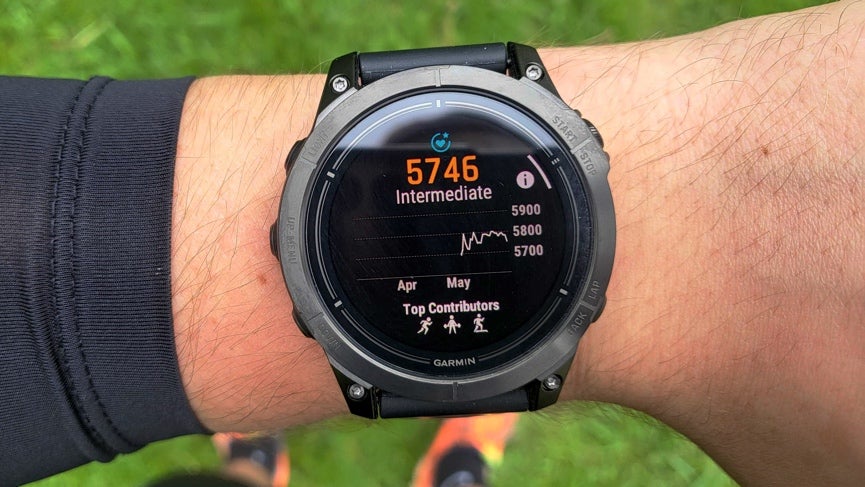
The Epix Pro 2 is also the first device – along with the 7 Pro series – to feature Garmin’s Endurance Score and Hill Score, two new insights designed to help you gauge training performance.
Both take around two weeks of full-time and wear before appearing, and will then deliver a constantly updating graph of how your endurance or hill skills are increasing or declining.
In itself, this is a little odd, because the new world of Unified Training Status should mean that it’s ready from the get-go, as we’ve been logging data on Garmin watches for years.
The fact both need bedding in periods means it’s not really possible to view data further back than when we started wearing the Epix Pro around 8 weeks ago.
Anyway, what about the actual data? Well, we think there’s promise in both – though they’re not quite as polished as we’d like just yet.
Let’s start with Endurance Score, which applies no matter which sports you track.
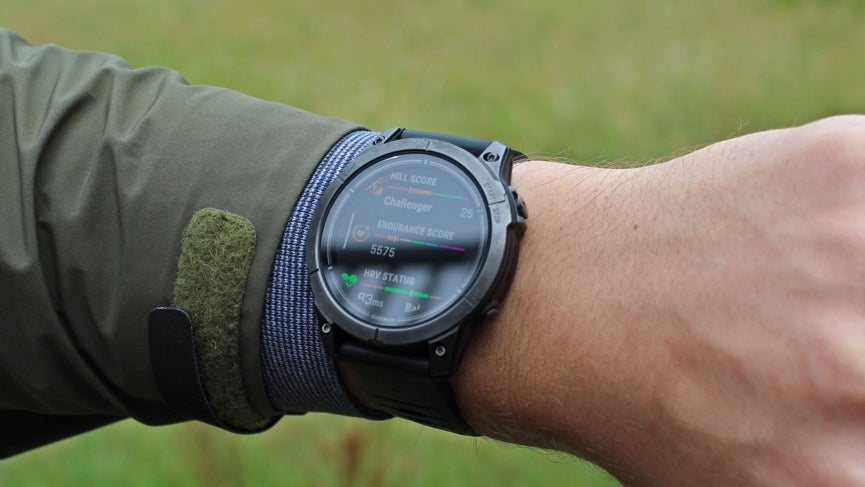
On one hand, we can see how it’ll become a solid performance insight alongside something like Garmin’s Race Predictor, which has never really accounted for endurance and has instead been more heavily influenced by VO2 Max trends and the speed you’re showing in your training.
However, at the moment, we’re just not really sure how to use it as a tool in the same way as we do with features like Training Load Focus or Training Effect.
We’re certainly not close to marathon shape, and the new Endurance Score would indicate as much, but there doesn’t appear to be enough rhyme or reason for the score improving or declining.
One of our hour-long Zone 2 runs saw the score bump by a few points, for example, and another virtually identical run (in time and HR averages) saw it improve by 40 points. A week-on-week increase in miles also saw it go down.
It’s not that the overall score isn’t accurate enough, it’s just that it’s difficult to really plan your training around it – especially without historical data for you to look back on.
Some advice or training block plans to improve this, then, would be really welcome.
Hill Score
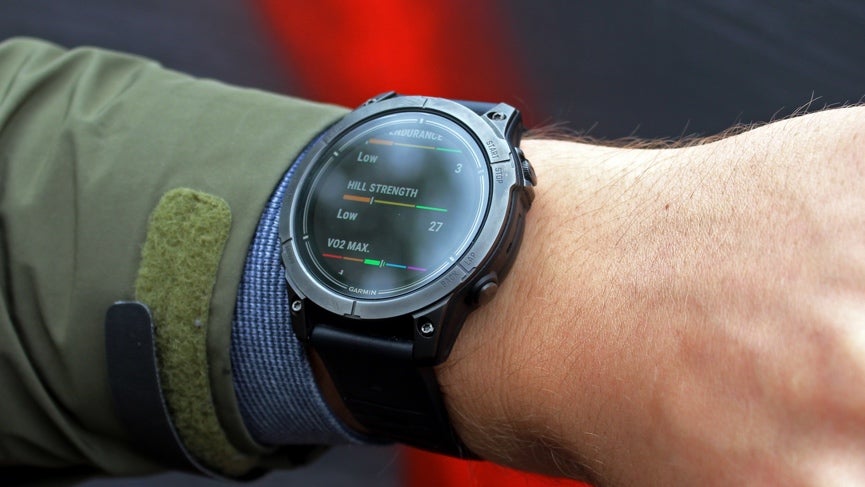
The running-only Hill Score is the other new addition here.
This will obviously be of huge interest to trail runners out there, and, considering we tend to avoid big inclines/declines during our runs, we feel like our mediocre Hill Score is about right.
The figure is determined by things Garmin is describing as ‘Hill Endurance’ and ‘Hill Strength’, as well as your VO2 Max.
And, like with Endurance Score, our only real gripe would be the lack of specific sessions or advice on how to really tackle this, because it’s also not super clear (unless you really dig into Garmin’s lengthy Hill Score explainer) how these two metrics are actually being calculated.
Again, our issue isn’t as much with the score’s accuracy as it is with how useful it can be when you don’t clearly know how to improve it. Our score hasn’t moved even with a lot more hills and mileage increases over the past six weeks, for example.
For both of these new scores, though, we’d also note that it’s still early days, and we expect things to progress over the next year or two.
Just definitely don’t upgrade for them, because they’ll be trickling down to other premium Garmin watches like the FR965 and Fenix 7 before the end of the year.
Garmin Epix Pro vs. Epix (Gen 2)
We’ve focused primarily on the Epix Pro’s exclusive features above, because, at least when comparing the 47mm models, the package is absolutely identical to the Epix 2 in every other aspect.
If you’re interested in the full, detailed analysis of what the Epix Pro offers, we’d suggest jumping over to our in-depth Epix 2 review. And you can see a breakdown of all the minor changes in our full Epix 2 and Epix Pro comparison.
Below, we’ll give a brief rundown of how we think each part of the fitness, health, and smart experience performs – but, spoiler alert, there are no major surprises here.
Fitness tracking
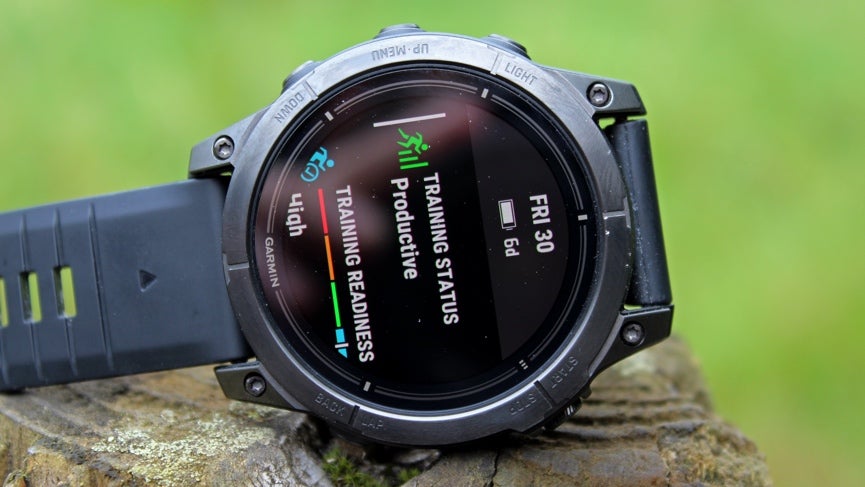
Garmin leads the way in this regard, and, with the Epix Pro (and Epix 2), you’re getting the very best fitness tracking package money can buy.
Garmin’s Multi-Band (dual-frequency) GPS is still as good as anything we’ve ever tested – right alongside the Apple Watch Ultra – and one that we’ve been mightily impressed by during a couple of recent 10km races.
On both occasions, it only overestimated our distance by 50 meters, which is pretty good going considering we probably added some of that ourselves by taking elongated paths around corners, etc.
We’ve seen during our one-off Chicago Marathon GPS test that it definitely has the potential to get confused in skyscraper-packed areas, but, in pretty much any other conditions, your position is tracked very well.
Garmin has also built up a frankly ludicrous set of insights and sports profiles around this very solid HR and GPS performance.
If you can think of an insight you’d like or a sport you want to track, the Epix Pro probably has it, and the general accuracy and depth of features like Race Predictor, Training Readiness, Body Battery, and Garmin’s Running Dynamics mean you’ll have plenty to help guide you.
Training Status is still the most useful to power your training, and also continues to evolve with new elements such as Load Ratio and Chronic Load, but it’s the niche additions like the new weather map overlays (which are, for some reason, not present in actual sports tracking) or detailed golf course mapping that set the Epix Pro apart from the likes of the Forerunner range.
Health tracking
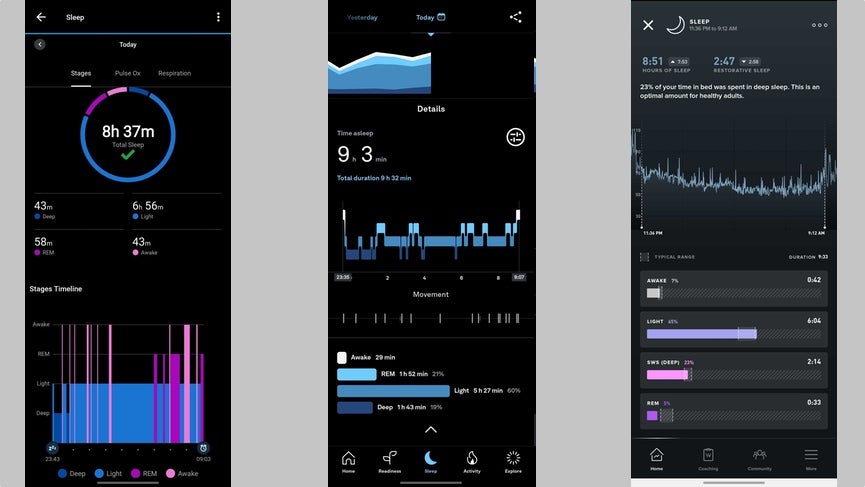
The Garmin health tracking experience has been growing steadily over the last few years, and the data is pretty good overall.
Resting heart rate figures are right in line with our averages from Whoop and Oura, Garmin’s HRV Status is still a great way of showing how your body is reacting to training, and blood oxygen data stayed in the expected 95-100% range throughout testing.
Garmin’s sleep tracking accuracy has also quietly taken a big leap forward this year, going from pretty unreliable and contributing negatively to features like Training Readiness to something we actually trust.
We wouldn’t say it’s on par with the industry-leading Oura Ring Gen 3, but it is comparable to what we find on our Whoop 4.0 or Fitbit/Google wearables.
There are a couple of omissions, though. The ECG tech currently only available on the Venu 2 Plus is built into the Epix Pro, which should be a huge win, but, at present, it’s not available.
Given that it’ll likely need external approval, as well, Garmin can’t really give any indication of when (or even if) it will actually arrive on the Epix Pro.
Then there’s obviously the lack of willingness from Garmin to branch out into areas like skin temperature monitoring or external blood pressure link-ups, but, overall, the package is decent enough for a sports watch.
Smart features
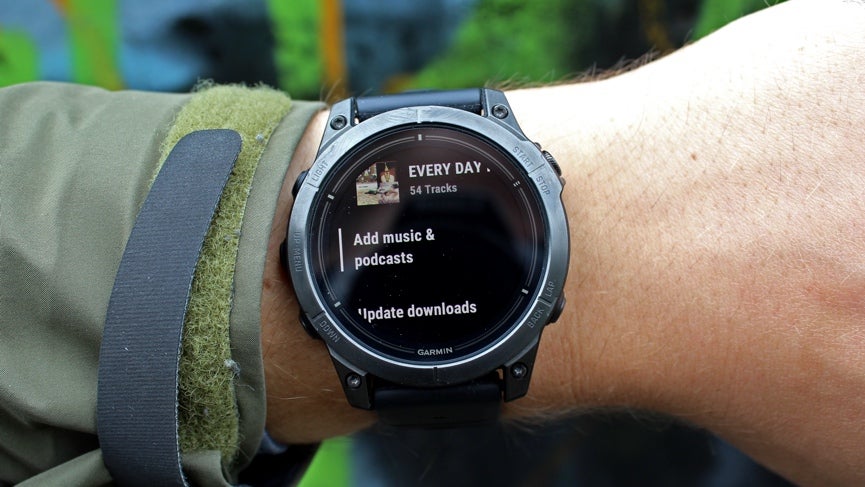
With the Epix Pro not really trying to be a smartwatch filled with apps and widgets, we won’t grade it too harshly in this regard. Basically, it just does enough to get by.
Notifications are customizable and very readable on the AMOLED display, and weather (now complete with wind, cloud, and precipitation overlays, as we mentioned), offline Spotify playback, and sunset/sunrise info can be added to the My Day screen.
The offline Spotify experience is still a bit patchy for our liking, with skipping or pausing tracks leading to our headphones disconnecting or playback just disappearing, but it works fine if you’re willing to work around its foibles.
After all, it’s a lack of polish that’s only really been solved by the Apple Watch Ultra on a sports watch, and other apps available on the Garmin Connect IQ store are similar.
The one we find really frustrating is the lack of support (at least in the UK) for Garmin Pay, with what should be a really handy feature essentially proving useless unless you’re aligned with a niche challenger bank.
Battery life

Naturally, the battery life you’ll get from the Epix Pro differs greatly based on which case size you actually pick up – and that’s also ignoring the other variables that exist between different users.
Generally speaking, though, we’ve found you’ll get around 5-6 days of decent use with the Epix Pro’s always-on display turned on, with the option to extend that to around 14-16 days if you turn it off.
That latter detail is crucial, in our view, because it means you can still get a Fenix-level battery if you’re willing to make a compromise on the display (which, technically, you’ll already have to if you choose a Fenix instead of an Epix).
In our time using it, we mostly had the display maxed out and always on, with blood oxygen monitoring turned on during sleep and the screen off between 22:00 – 07:00.
Each day would see at least around 60 minutes of tracked exercise, most of that using SatIQ GPS and always streaming Spotify from the watch, which is a bit of a notorious battery drainer.
In this quite specific setup – but one we suspect is comparable to a decent chunk of users – we found a drain of around 20% per day. This went up on days with a longer outdoor session, naturally, and would decrease to around 15% if we were in the gym.
An hour of GPS tracking without Spotify, as a reference, would drain the battery by around 6%, while an equivalent time with Spotify would see that stretch to around 10-12%.
This is roughly the kind of burn we saw from the standard Epix 2, and we should also note that the flashlight will see this estimation drop dramatically, too.
It places the Epix Pro just below what you can expect from the Forerunner 965, which is a little disappointing considering the price difference and similarity in what’s on offer, but we still rate it as having a very solid battery life.
Plus, again, there are plenty of options to stretch things out if battery longevity is your priority.
